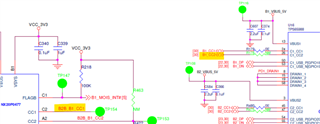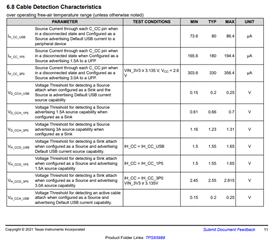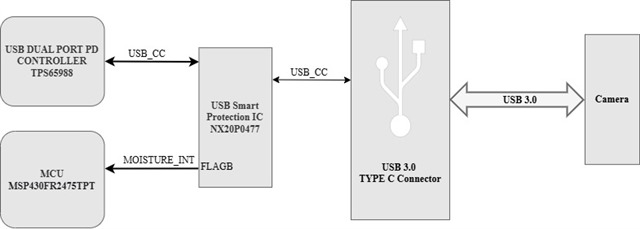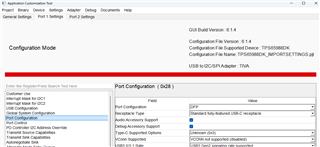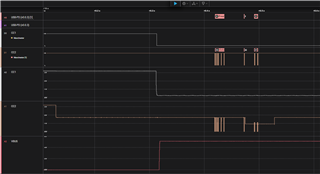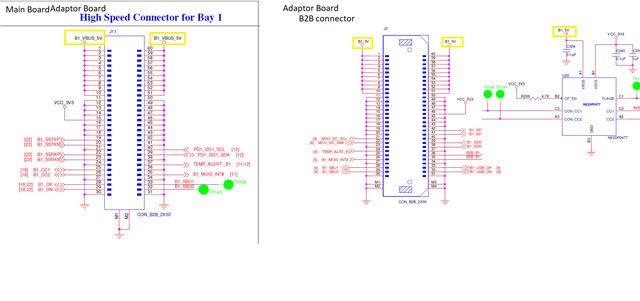Other Parts Discussed in Thread: TPS65988, TPS25751
Tool/software:
Hello Team,
We are using TPS65988DK PD in our design .We are facing one issue with CC lines .
Please find arch block diagram, CC2 line is no mount , we are using only CC1 line for detection
NX20P0477 is the Moisture Sensor IC from NXP which detect moisture on the CC lines .
When the Device is connected on the type C connector (with no moisture ) the CC lines impedance goes low (voltage goes low approx 400mV to 300mV)
below waveform - measured on CC1 (IC input TP148)and FLAG (TP154 flag pin) in moisture fault condition.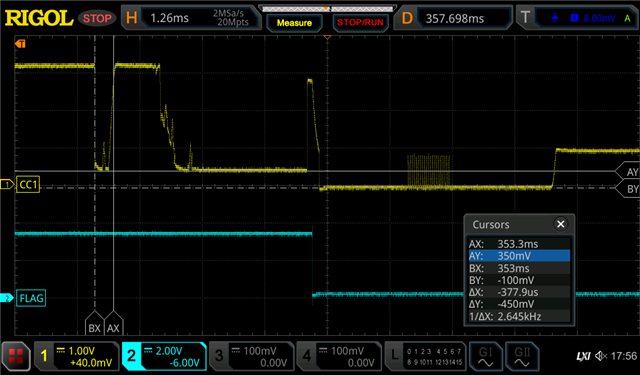
Observation: As seen in the image above, a 350mV drift was observed on the CC line under fault conditions, and a moisture fault occurred after 4.3ms
below waveform - measured on CC1 (IC input TP148)and FLAG (TP154 flag pin) in charging condition
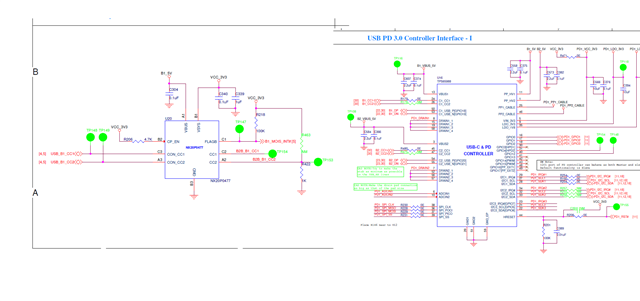
This is the Random Behaviour we are observing in our boards .Sometime the Moisture fault is generated and sometime not . Please check the waveform and schematic attached and suggest the possible solution .


